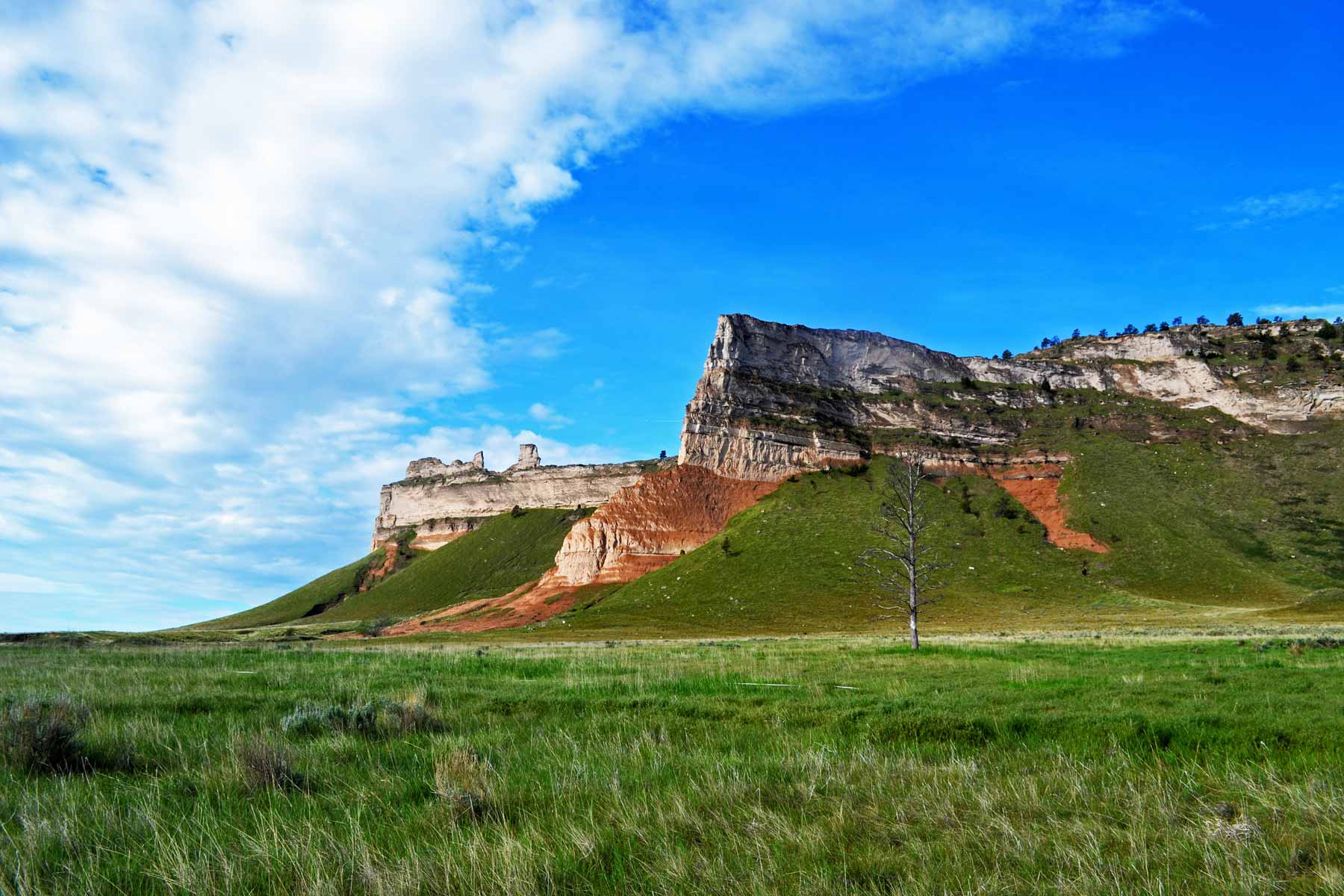
Article Summary: Historic Sites In Nebraska
Historic Sites In Nebraska. More Than Just Parks has 15 incredible must-see sites for you to visit.
I’ve been to so many of these amazing places since retiring from teaching in 2018. Did I mention that I taught history? I spent a lifetime teaching about the history behind these momentous sites. Then I got to see them firsthand. And now I’m sharing the stories of these incredible places with you. It doesn’t get any better than that!
I’m going to give you my list of the 15 Historic Sites In Nebraska that you’ll want to see.
To be clear, this list includes national park sites (as in sites managed by the National Park Service) as opposed to national parks. It also includes sites not managed by the National Park Service. After all, we’re more than just parks!
If you’re planning a trip to the Cornhusker State then one book that I highly recommend is: Detour Nebraska: Historic Destinations & Natural Wonders by Gretchen Garrison.
Without further ado, let’s dive in!
Table Of Contents: Historic Sites In Nebraska
Top 15 Historic Sites In Nebraska
15. George W. Norris House

Nebraska is famous for its thriving music scene, vast prairies, spacious farmlands, and unique attractions. The state was once considered part of the Great American Desert but has since transformed into a leading agricultural state.
It also has some amazing historic sites. More Than Just Parks is excited to share our list of the Top 15 Historic Sites In Nebraska. And we’re kicking off our list at #15 with the George W. Norris House.
The George W. Norris House is a historic home located in McCook, Nebraska. The house is named after its most famous occupant, George William Norris, who was a prominent American politician and statesman in the early 20th century.
Norris was born in 1861 in Ohio and moved to Nebraska in 1885 to practice law. He quickly became involved in local politics and was elected to the U.S. House of Representatives in 1902. In 1912, he was elected to the U.S. Senate, where he served for over 30 years.
He Became Known For His Progressive Political Views
During his career, Norris became known for his progressive political views and his advocacy for public power, rural electrification, and the rights of farmers and workers. He was a key figure in the creation of the Tennessee Valley Authority and the Rural Electrification Administration, and he played a major role in the New Deal programs of President Franklin D. Roosevelt.
In 1935, Norris purchased a home in McCook, Nebraska, where he had spent much of his youth. The house, which was built in 1885, had fallen into disrepair, and Norris spent much of his own time and money renovating and restoring the property. He lived in the house for the rest of his life, until his death in 1944.
After Norris’s death, the George W. Norris Foundation was established to preserve and maintain the historic home as a museum and educational center.
Today, the George W. Norris House is listed on the National Register of Historic Places and is open to the public for tours and educational programs. The house is a significant historical site that honors the legacy of one of Nebraska’s most influential politicians and statesmen.
14. Ash Hollow Historical Park

Our next historic site has been important for centuries, serving as a significant landmark for Native Americans and pioneers alike. At #14 on our list of the Best Historic Sites In Nebraska is Ash Hollow Historical Park.
Here is a brief history of the park:
- Prehistory: The area surrounding Ash Hollow was used by Native American tribes for thousands of years, and evidence of their habitation can still be seen in the form of petroglyphs and artifacts.
- 1800s: In the early 1800s, European fur trappers began to explore the area, and in 1850, the first wagon trains of pioneers passed through on their way westward. Ash Hollow became an important rest stop on the Oregon, California, and Mormon Trails, offering fresh water, wood, and game.
- 1855: The U.S. Army established a supply depot at Ash Hollow during the Indian Wars. Soldiers were stationed there to protect the Overland Trail and maintain peace between Native Americans and settlers.
- 1865: After the Indian Wars ended, Ash Hollow continued to be an important site for ranchers and farmers in the area. The site was eventually acquired by the state of Nebraska and turned into a state park.
- 1971: Ash Hollow was designated a National Historic Landmark, recognizing its importance as a landmark on the western frontier and its significance to Native American history.
Ash Hollow Today
Today, Ash Hollow Historical Park contains a number of historic buildings and exhibits that tell the story of the pioneers, soldiers, and Native Americans who lived and traveled through the area.
The park is also known for its beautiful scenery, including the nearby Ash Hollow Cave and Windlass Hill, which offer stunning views of the surrounding landscape.
13. Willa Cather House

Our next historic site celebrates one of America’s most gifted authors. At #13 on our list of the Best Historic Sites In Nebraska is the Willa Cather House.
The Willa Cather House is located in Red Cloud, Nebraska, and is a historic site that was the childhood home of author Willa Cather.
Here is a brief history of the house:
- 1873: The house was built by Willa Cather’s grandparents, George and Rachel Boak, who were among the first settlers in the area.
- 1884: Willa Cather was born in the house, and spent much of her childhood there. She would later become a celebrated author, known for works such as “My Ántonia,” “O Pioneers!,” and “Death Comes for the Archbishop.”
- Early 1900s: After leaving Red Cloud to pursue her writing career, Cather maintained a connection to the house and the town. She often visited her parents there, and used the town and its people as inspiration for many of her works.
- 1955: After Cather’s death, the house was left to her cousin, Grosvenor Phillips, who maintained it as a rental property.
- 1973: The Willa Cather Foundation was formed, with the goal of preserving Cather’s legacy and promoting her work. The foundation acquired the house and began restoration efforts.
- 1986: The house was opened to the public as a museum, offering tours and educational programs about Cather’s life and work.
The Willa Cather House Today
Today, the Willa Cather House is an important cultural landmark in Nebraska, attracting visitors from around the world who come to learn about the life and work of one of America’s most celebrated authors.
The house has been restored to its original condition, and contains many of the furnishings and artifacts that were present during Cather’s childhood. The site also includes a visitors’ center, gift shop, and research library, and hosts a variety of events and programs throughout the year.
12. USS Hazard

Our next historic site honors a ship in the United States Navy that played an important role in several conflicts throughout the 20th century. At #12 on our list of the Best Historic Sites In Nebraska is the USS Hazard.
Here is a brief history of the ship:
- 1918: The USS Hazard was commissioned as a minesweeper during World War I. It was originally named the USS Auk, but was renamed in honor of Admiral Oliver Hazard Perry.
- 1920s and 1930s: After World War I, the USS Hazard was used primarily for training and patrol duties in the Atlantic and Pacific oceans.
- 1941: Following the outbreak of World War II, the USS Hazard was sent to the Pacific to participate in the defense of the Philippines. It was later involved in the Battle of Java Sea and the Battle of Sunda Strait.
- 1943-1945: The USS Hazard was primarily involved in mine-clearing operations in the Pacific. It was also involved in the Battle of Leyte Gulf and the liberation of the Philippines.
- 1946-1949: After the end of World War II, the USS Hazard was used for training and patrol duties in the Pacific.
- 1950-1953: During the Korean War, the USS Hazard was used for mine-clearing operations and patrol duties in the Korean waters.
- 1954: The USS Hazard was decommissioned and sold to the French Navy, where it was renamed the L’Agenais and served until 1963.
The USS Hazard Today
Today, the USS Hazard is remembered as a versatile and reliable ship that played a crucial role in several conflicts throughout its history.
Its legacy is honored by the USS Hazard Association, a group of former crew members and their families who seek to preserve the ship’s history and honor the sacrifices of those who served aboard it.
The USS Hazard Association maintains a website and organizes events and reunions for former crew members and their families.
11. William Jennings Bryan House

Our next historic site celebrates one of Nebraska’s most accomplished citizens. At #11 on our list of the Best Historic Sites In Nebraska is the William Jennings Bryan House.
The William Jennings Bryan House is a historic site located in Lincoln, Nebraska that was the home of William Jennings Bryan, a three-time presidential candidate and Secretary of State under President Woodrow Wilson.
Here is a brief history of the house:
- 1902: William Jennings Bryan and his wife, Mary, commissioned the construction of the house. The couple chose the location because it was close to the State Capitol, where Bryan had recently been elected to serve as a Congressman.
- 1904: The house was completed, and the Bryans moved in. The house was designed in the Georgian Revival style, with large columns and a symmetrical facade.
- Early 1900s: The Bryans hosted many important political and social events at the house, including meetings of the Democratic National Committee and receptions for foreign dignitaries.
- 1925: After the death of Mary Bryan, William Jennings Bryan sold the house to the Nebraska Episcopal Diocese, which used it as a bishop’s residence for several decades.
- 1971: The house was added to the National Register of Historic Places, recognizing its importance as a landmark of Nebraska history and its association with William Jennings Bryan.
- 1986: The house was acquired by the Nebraska State Historical Society, which restored it to its original condition and opened it to the public as a museum.
The William Jennings Bryan House today
Today, the William Jennings Bryan House is an important cultural landmark in Nebraska, offering visitors a glimpse into the life and times of one of America’s most influential political figures.
The house contains many of the original furnishings and artifacts that were present during Bryan’s time there, as well as exhibits and educational programs about his life and career.
The site also includes a visitors’ center and gift shop, and hosts a variety of events and programs throughout the year.
Top 10 Historic Sites In Nebraska
10. Fort Atkinson State Historical Park

We’re on to the Top 10 Historic Sites In Nebraska. If you love military history then you’ll enjoy our next site. It’s Fort Atkinson State Historical Park.
It’s located near the town of Fort Calhoun, Nebraska, and is a site of great historical significance.
Here is a brief history of the fort:
- 1819: Fort Atkinson was established by the United States Army, under the direction of Colonel Henry Atkinson. The fort was built on a bluff overlooking the Missouri River, and was intended to protect American fur traders and enforce U.S. territorial claims in the region.
- 1820s: Fort Atkinson became an important center of trade and diplomacy in the region, with a large number of Native American tribes coming to the fort to negotiate treaties and trade goods.
- 1827: The fort was abandoned by the U.S. Army, as it was deemed unnecessary due to improved relations with Native American tribes and changes in U.S. territorial boundaries.
- 1832-1833: The fort was briefly reactivated by the U.S. Army during the Black Hawk War, but was again abandoned in 1834.
- 1850s: The site of Fort Atkinson became a popular stop for settlers and traders on their way to the western territories. A town called Fort Calhoun was established nearby.
- 1960s: The Nebraska State Historical Society acquired the land and began excavating and reconstructing the fort. Today, the site is a state historical park and contains a reconstructed fort, museum, and educational center.
Fort Atkinson Today
Today, Fort Atkinson State Historical Park is an important cultural landmark in Nebraska, offering visitors a glimpse into life on the western frontier during the early 19th century. The reconstructed fort includes barracks, officers’ quarters, and other buildings that were present during the fort’s original occupation.
The museum contains artifacts and exhibits related to the history of the fort and the region, and the educational center offers a variety of programs and events throughout the year.
9. Memorial Stadium

Next up is a site which will resonate with football fans. At #9 on our list of the Best Historic Sites In Nebraska is the Memorial Stadium.
Memorial Stadium is a historic football stadium located on the campus of the University of Nebraska-Lincoln.
Here is a brief history of the stadium:
- 1923: Construction began on Memorial Stadium, which was designed to replace Nebraska’s previous football stadium, Nebraska Field.
- 1924: Memorial Stadium was completed, and the first game was played on October 20th of that year. The stadium was dedicated to Nebraskans who had died in World War I.
- 1946: The first major expansion of the stadium was completed, increasing the seating capacity from around 31,000 to over 42,000.
- 1965-1966: Another major expansion was completed, adding an upper deck to the stadium and increasing seating capacity to over 67,000.
- 1994: The north end zone was expanded, adding more than 6,000 seats and bringing the total capacity to over 73,000.
- 2006-2013: A series of renovations and upgrades were completed at Memorial Stadium, including the addition of luxury boxes, new scoreboards, and other amenities.
Today, Memorial Stadium is one of the largest and most historic football stadiums in the United States, and is the home of the Nebraska Cornhuskers football team.
The stadium has hosted many important games and events over the years, including multiple Big Ten Conference championships and several bowl games.
The stadium is also known for its tradition of “The Wave,” in which fans wave to patients at the nearby Children’s Hospital and Medical Center during the third quarter of each game.
8. Captain Meriwether Lewis

If you enjoy the unusual then our next historic site if for you. At #8 on our list of the Best Historic Sites In Nebraska is the Captain Meriwether Lewis. And, this is no ordinary ship.
The Dredge Captain Meriwether Lewis, located in Brownville, Nebraska, has a fascinating history.
Built by the Marietta Manufacturing Company in Point Pleasant, West Virginia, the dredge was launched on December 12, 1931 while only half-complete by the U.S. Army Corps of Engineers. The Corps completed construction the following year.
In 1976, Captain Meriwether Lewis was given to the Nebraska State Historical Society and moved to Brownville one year later. It was dry-berthed along the Missouri River where it remains today. The dredge was designated a National Historic Landmark in 1989.
Today, Captain Meriwether Lewis houses the Museum of Missouri River History, where visitors can learn about the vessel’s role in improving navigation on the Missouri River and the exhibits from Native American history to exploration and westward expansion.
The museum also provides guided tours of the dredge, giving visitors a glimpse into the past and the technological marvels that allowed such a massive vessel to operate.
7. Father Flanagan’s Boys Home

We move from a dredge which celebrates one of America’s greatest explorers to the story of an Irish-born priest who arrived in the U.S. in 1904 and was ordained in 1912. But this was no ordinary priest.
At #7 on our list of the Best Historic Sites In Nebraska is Father Flanagan’s Boys Home.
Father Edward J. Flanagan was a social reformer who believed in the rights of children and spoke out against the abuse they faced in reformatories and juvenile facilities.
He is best known for founding Father Flanagan’s Boys Home in 1917, which later became Boys Town, and advocating for the needs of children across the country.
A Home That Accepted All Boys
It accepted all boys, regardless of their background, and offered them a new start in life, including boys who were in prison for serious crimes.
Father Flanagan passed away in 1948, but his legacy and mission have been carried on by his successors.
Visitors can take self-guided tours or a tour with a student guide and can visit the Hall of History, the Dowd Memorial Chapel which holds Father Flanagan’s Tomb, and the National Register-listed Father Flanagan’s House.

6. Chimney Rock National Historic Site

Our next historic site is a natural wonder. At #6 on our list of the Best Historic Sites In Nebraska is Chimney Rock National Historic Site.
Chimney Rock has become one of the most famous landmarks in the American West, largely due to its stop along the Oregon Trail.
Chimney Rock has become one of the most famous landmarks in the American West, largely due to its stop along the Oregon Trail.
This unique formation came to symbolize the greatest voluntary migration in the history of mankind. The site is jointly administered by History Nebraska and the National Park Service, which operates the Ethel and Christopher J. Abbot Visitor Center at the Chimney Rock National Historic Site.
Explore exhibits on 19th century westward migration and the significant role Chimney Rock had in the memories of those who traveled the trails west. (Source: National Park Foundation)
Top 5 Historic Sites In Nebraska
5. Scotts Bluff National Monument

We’re on to the Top 5 Historic Sites In Nebraska. At #5 is Scotts Bluff National Monument.
Scotts Bluff National Monument consists of several large bluffs, or hills, that rise dramatically above the surrounding prairie.
The bluffs have played an important role in the history of the American West, serving as a landmark for settlers, pioneers, and Native American tribes.
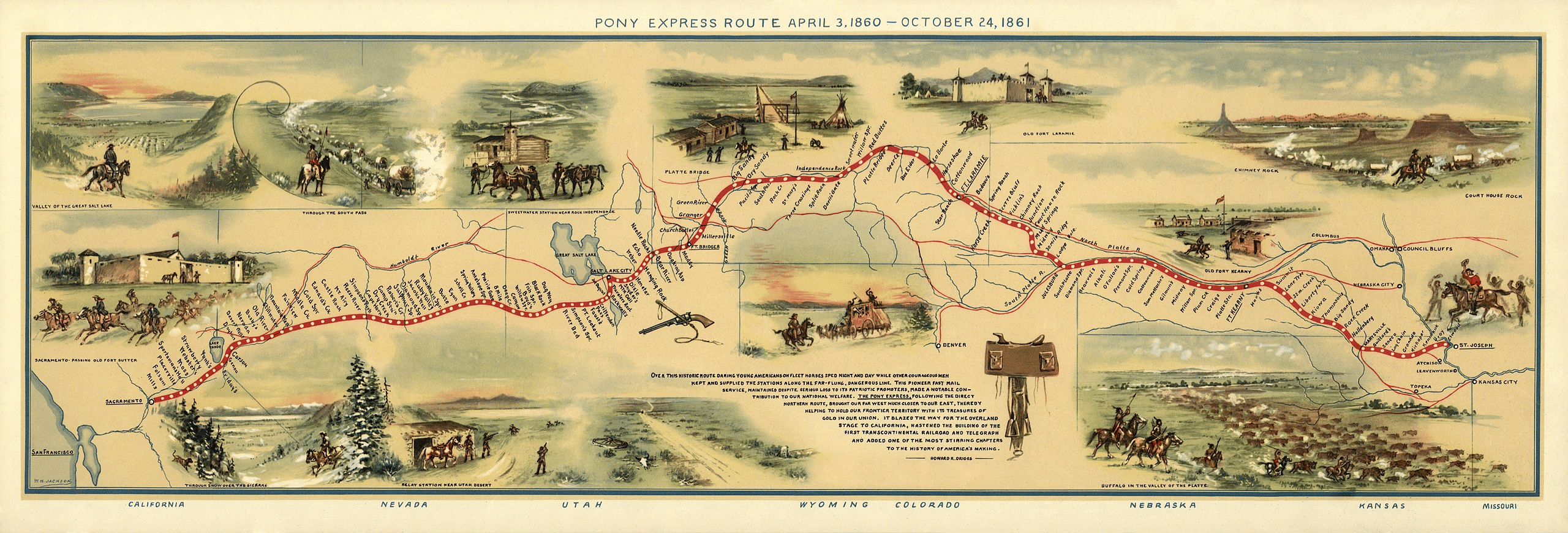
Visitors can walk in the footsteps of pioneers on remnants of the Oregon Trail, drive to the top of the bluff via the Summit Road and stand in awe at the sight of the bluffs raising from the prairie.
Today, the site is protected as a national monument, and visitors can explore trails, scenic overlooks, and exhibits about the area’s cultural and natural history.
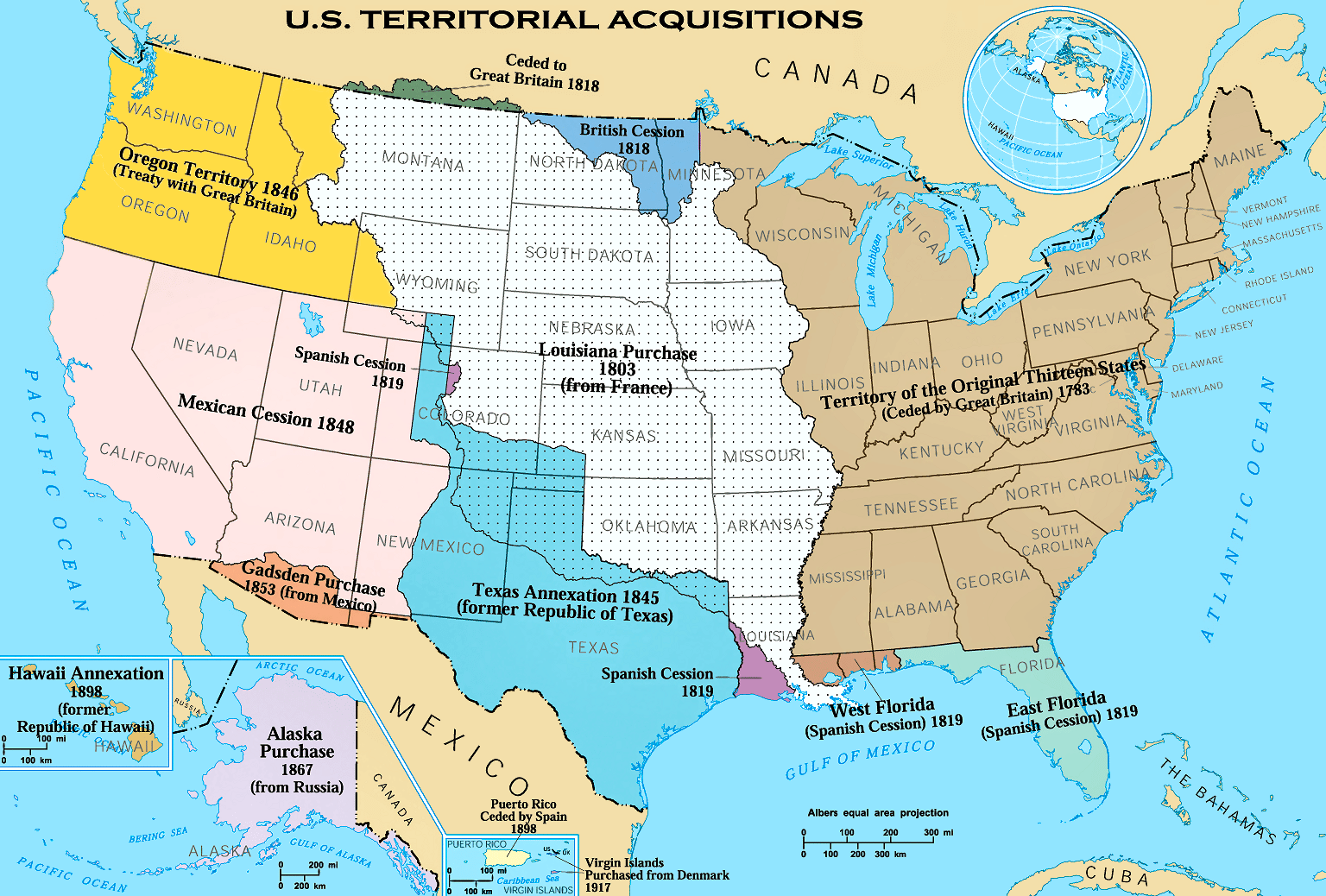
CHECK OUT: 25 BUCKET-LIST FAMOUS HISTORIC LANDMARKS IN AMERICA (MUST-SEE)
Nearly Four Miles Of Hiking Trails
You will find almost four miles of hiking trails at the Scotts Bluff National Monument.
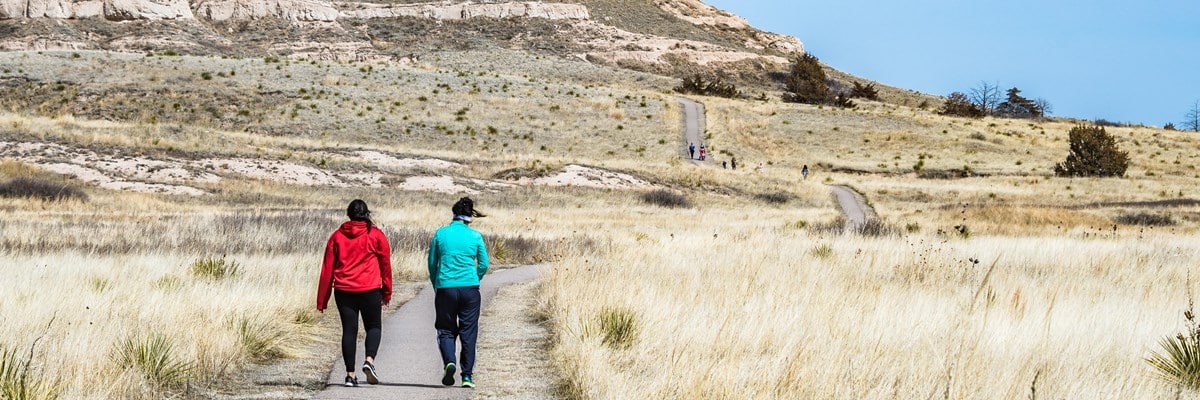
The rock along Summit Trails and Saddle Rock Trail is soft and crumbly; leaving the paved trails can be extremely dangerous.
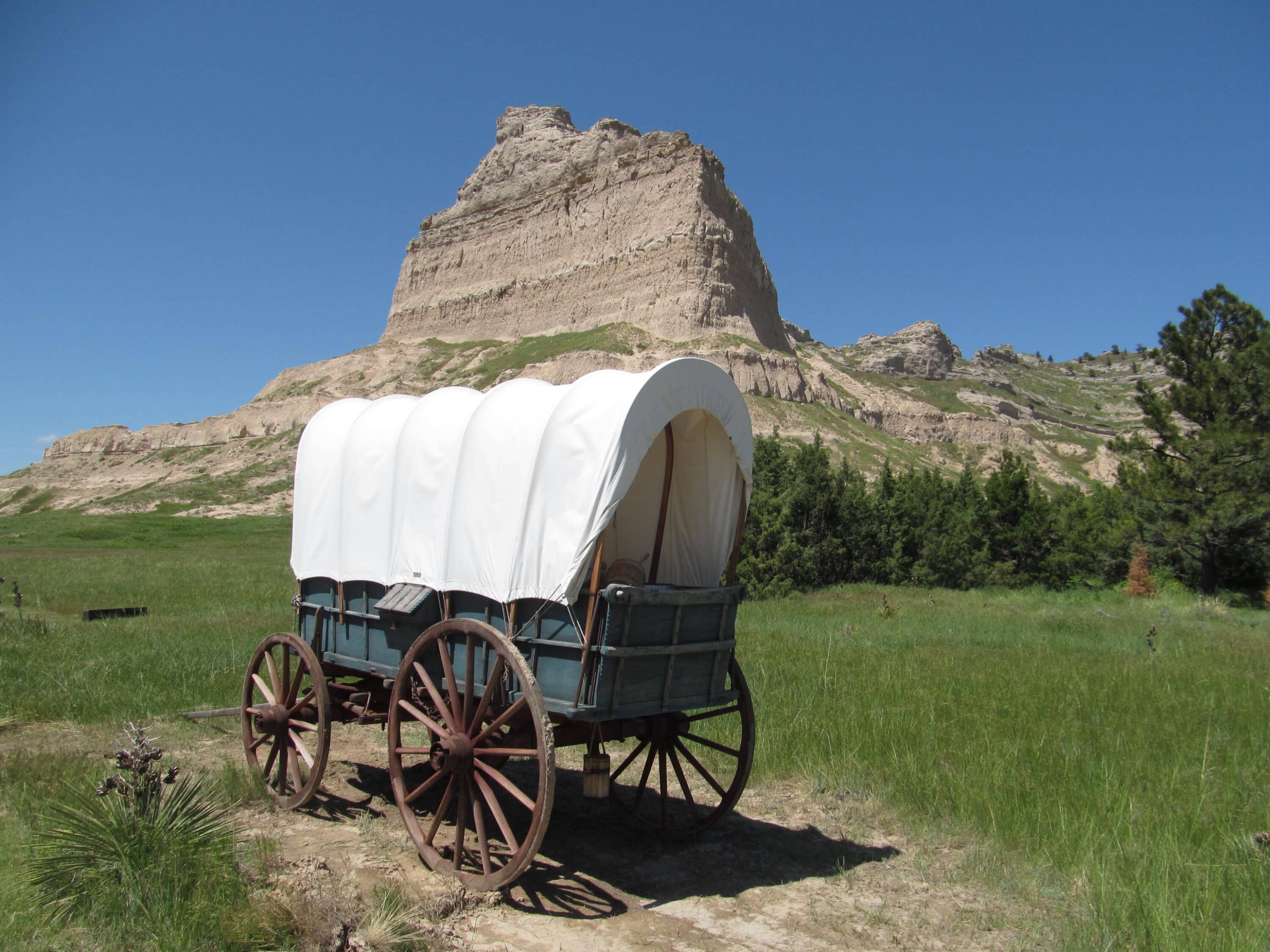
Check Out The William Henry Jackson Collection
One of the more interesting figures you’ll learn about is William Henry Jackson.
He was an American photographer and painter who was born in 1843. He is best known for his work as a photographer of the American West during the late 19th century.
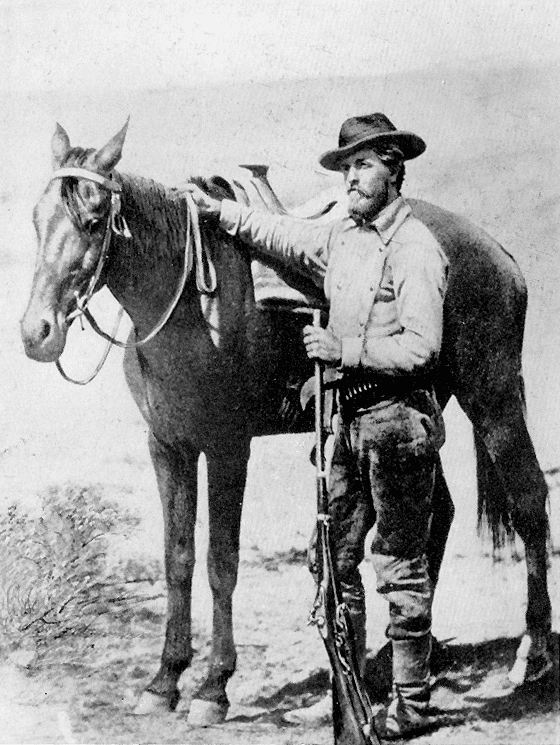
Jackson was one of the first photographers to document the western landscape and the people who lived there, and his images helped to popularize the American West and shape the public’s perception of it.
In addition to his photography, Jackson was also a skilled painter, and he used his artistic abilities to produce detailed sketches and paintings of western landscapes.
Throughout his long career, Jackson continued to travel and document the American West, leaving behind a rich legacy of images that capture the beauty and diversity of this unique region.
Scotts Bluff National Monument houses the world’s largest collection of original William Henry Jackson sketches, paintings, and photographs.

RELATED: 19+ Best Hiking Apps RANKED By Experts (From Best To Worst)
Seeing The Flora & Fauna At Scotts Bluff
Scotts Bluff National Monument is one of the few places in the Panhandle of Nebraska where wildlife is protected in a natural environment.
There you will find various species of reptiles, amphibians, birds, mammals and invertebrates.
Wildlife commonly seen include coyote, mule deer, prairie dogs and rattlesnakes.
You can also find a variety of plants including Plains Prickly Pear, Ponderosa Pine, Rocky Mountain Juniper, Soapweed Yucca and Winterfat.

4. Niobrara National Scenic River
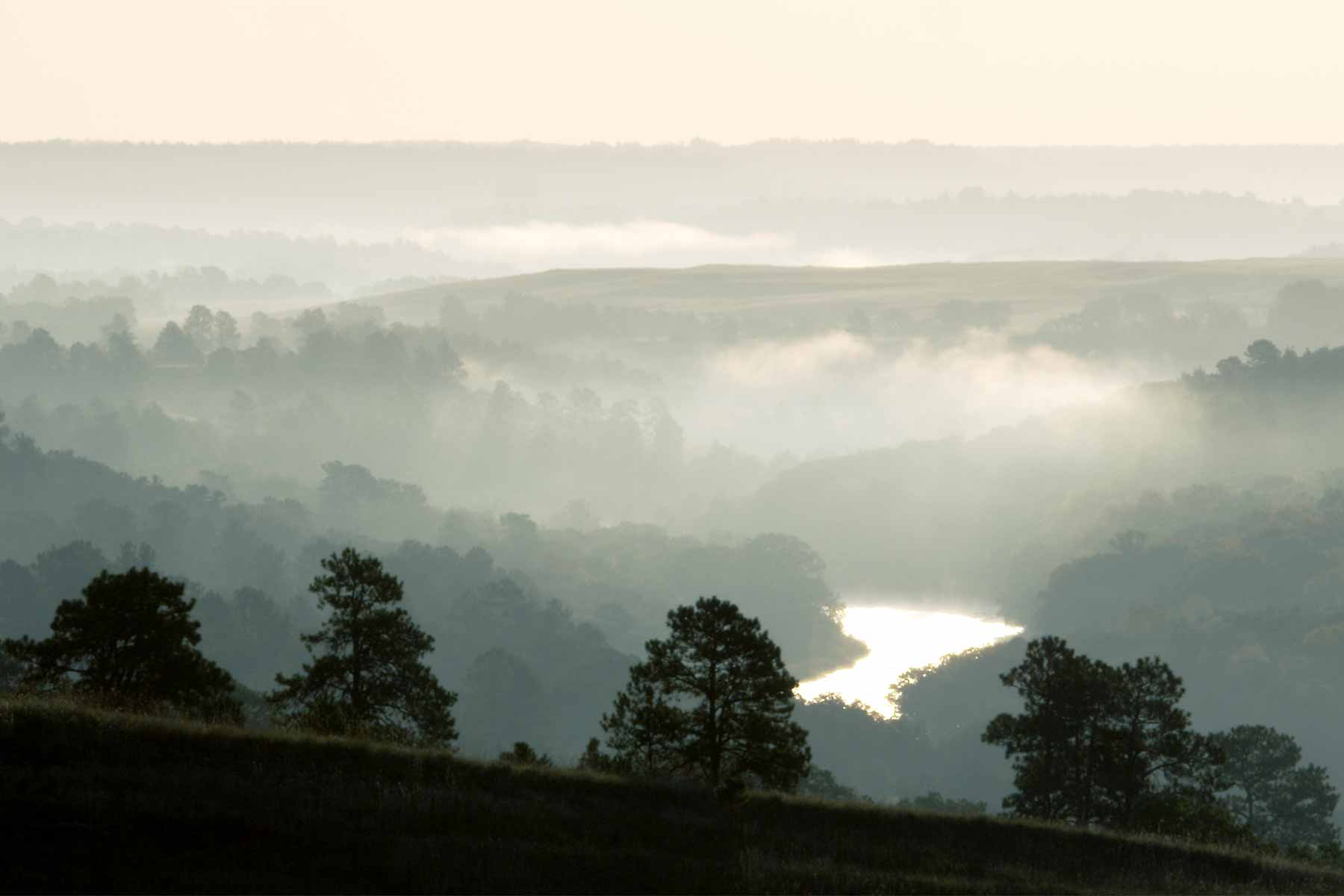
We’re on to the “Final Four.” And at #4 is the Niobrara National Scenic River.
As the National Park Service proclaims, the Niobrara National Scenic River is 76 miles of free-flowing fun. It’s a place where you can canoe, tube, or kayak.
It’s a family friendly river and offers scenic views of waterfalls, wildlife, and the unique geology of the Niobrara River Valley. But it’s also a scenic site that’s not without its history, too, which is why we included it.
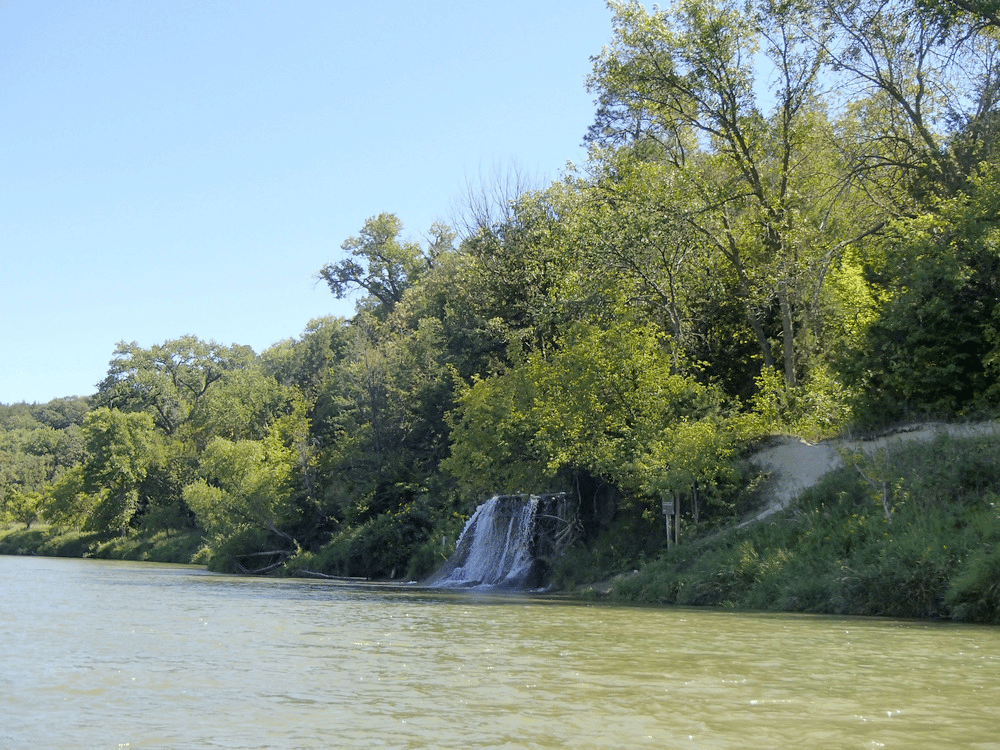
The Early People Of The Niobrara
According to the National Park Service, the early people of the Niobrara knew it as a sacred place where “Niobrara” – spreading water river– flowed freely and wildlife were abundant when the seasons made the river an ideal place for them to be.
The Niobrara River Valley was first cared for by twenty-one roaming Native American Nations who knew the resources of the land and celebrated the river as a fruitful home during bison hunting seasons.
When the Homestead Act of 1862 was signed into law by President Lincoln, settlers from the East and South moved in to claim 160 acres of land, driving Westward expansion and starting communities of diverse people in small settlements like Valentine, Brownlee, and DeWitty.
There were contentious times as homesteaders set out to plot their homestead boundaries, raising fences and contending with nature to make the sandhills and five other ecosystems work in harmony and become prosperous while reservation systems were set up for the first caretakers of the Niobrara River Valley.
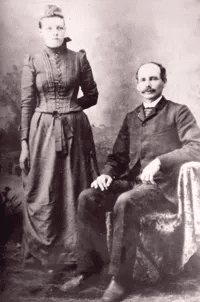
Take A Scenic Drive Along The River
Today you don’t have to struggle to tame the land. Instead you can take a scenic drive along the Niobrara River.
The Lower Niobrara River Valley Scenic Drive travels along stretches of the lower Niobrara River and Verdigre Creek both located in the 39-Mile District of the Missouri National Recreational River.
There’s also the Outlaw Trail Scenic Byway which is a beautiful route that includes hills, valleys, and jagged cliffs. It follows Nebraska Highway 12 from South Sioux City to Valentine for 231 miles.
The highway retraces much of the path where outlaws such as Doc Middleton, Kid Wade and their associates used to hideout.
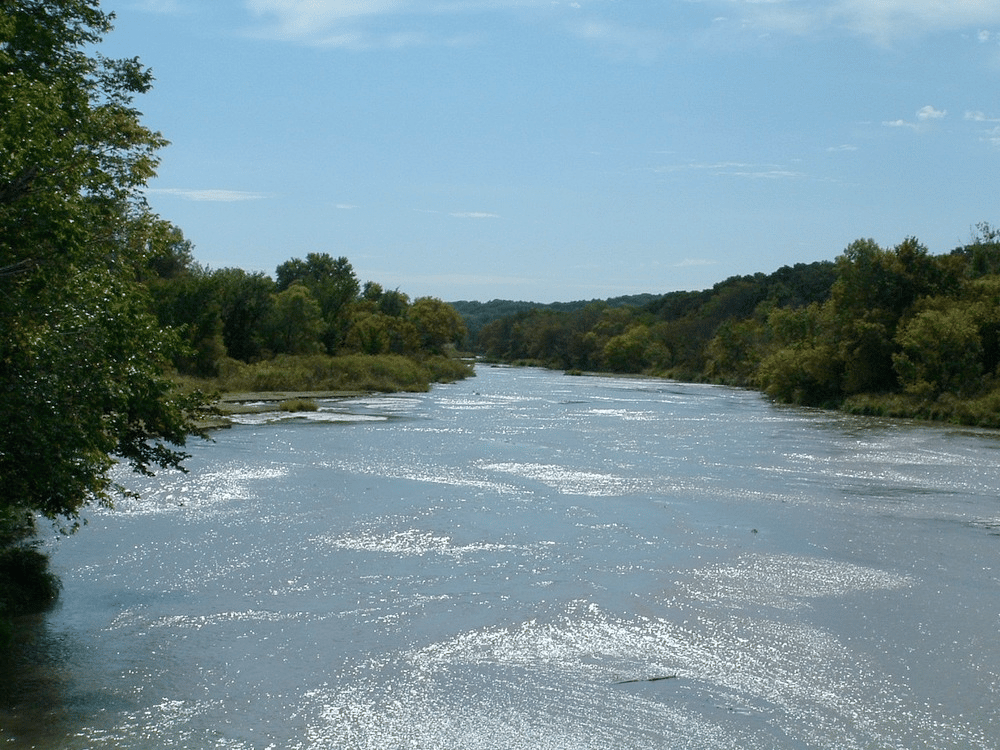
So Many Waterfalls, So Little Time
The western third of the Niobrara Scenic River is home to over 200 waterfalls. The highest of these is Smith Falls.
It plunges 63 feet over a sandstone cliff. Many locally-owned ranches are found along the river retaining the valley’s rural flavor; yet, much of its wild character is preserved.
Teeming with diverse wildlife, beavers, bull snakes, turkeys, coyotes, foxes, and both white-tailed and mule deer are commonly sighted along this river.

CHECK OUT: 10 MUST-See Historic Sites In Oklahoma
3. Agate Fossil Beds National Monument
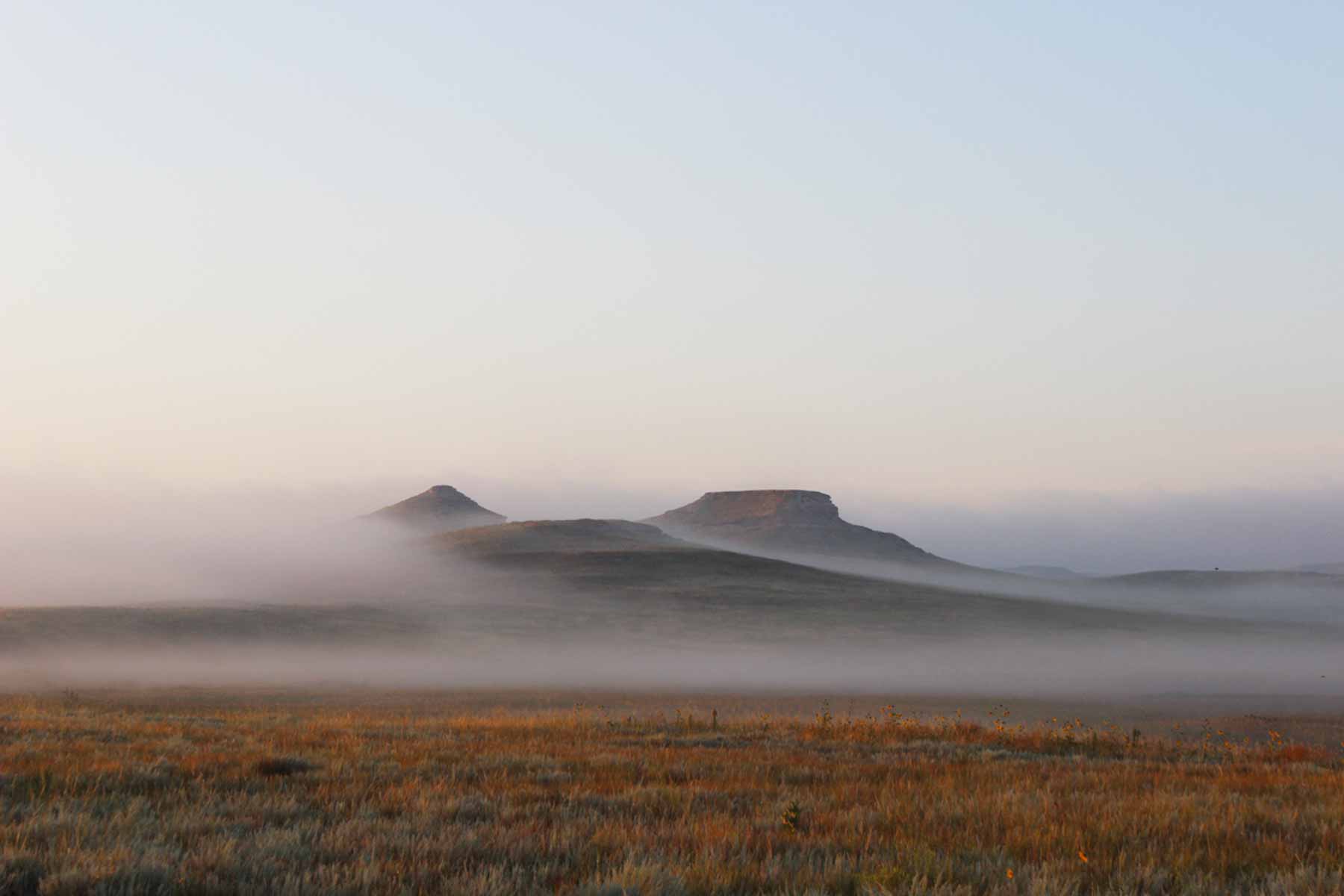
If you love history, like I do, then it doesn’t get any better or older than full skeletons of extinct Miocene mammals. At #3 on our list of the Best Historic Sites In Nebraska is a geologic wonder. Welcome to the Agate Fossil Beds National Monument.
This is what paleontologists unearthed in the hills of Nebraska. Through their efforts the age of mammals comes to life at Agate Fossil Beds National Monument.
Scientists discovered the bones of ancient mammals in the 1890s. Some of the most famous are the devil’s corkscrew burrows.
These corkscrew-shaped tunnels into the Earth’s core were built by prehistoric land beavers called Palaeocastors.
You Have To See It To Believe It And See It You Can At Agate Fossil Beds
Paleocastor had powerful clawed forelimbs for digging and long, curved teeth like modern beavers.
Herds of Stenomylus, gazelle-camels about two feet tall, grazed grasslands beside the three-toed, pony sized rhinoceroses Menoceras.
The most common mammal in the bonebed, Monoceras may have roamed these plains in large herds.
Fossil remains of the ancestors of the modern horse, Parahippus, have also been found in the waterhole. (Source: National Park Service)
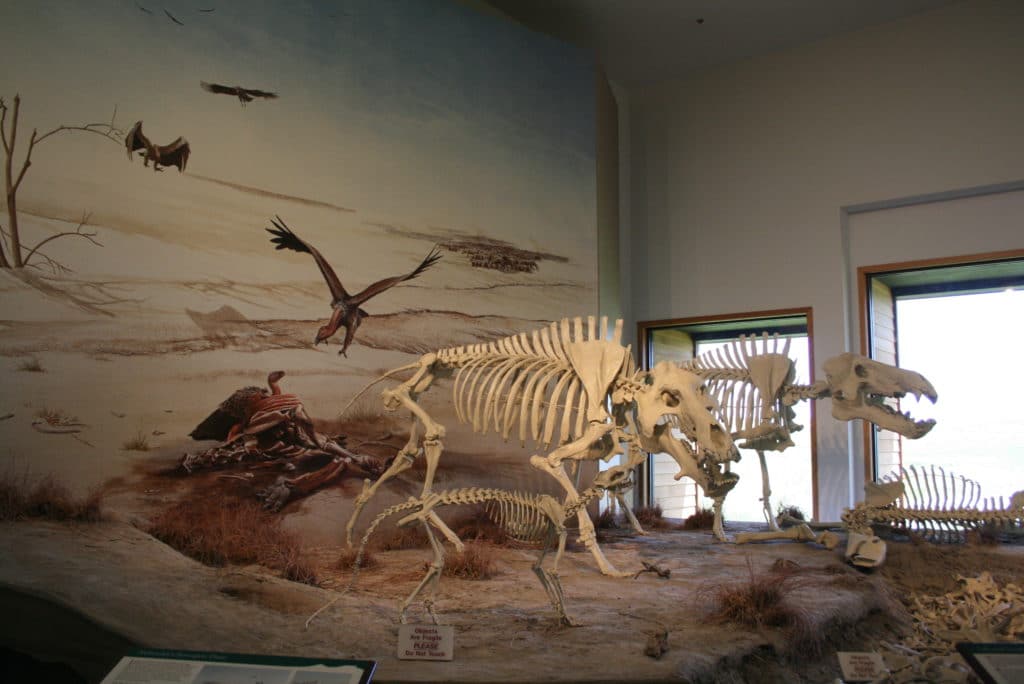
CHECK OUT: 15 MUST-SEE Historic Sites In New Mexico
Discovery Of The Fossils
Agate Springs Ranch, owned by James and Kate Cook, was the place where the original discovery of the petrified bones of a mammal was made. This happened in the 1880s.
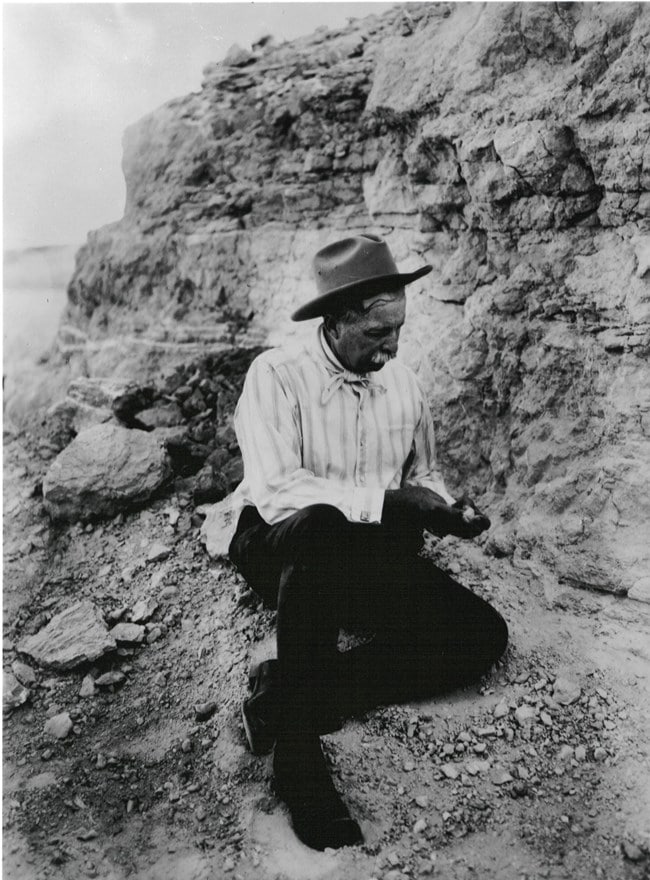
In 1892, Professor Erwin H. Barbour of University of Nebraska arrived.
He was the first scientist to examine the strange “Devil’s Corkscrews of Agate.”
These were later identified as the fossilized burrows of Paleocastor.
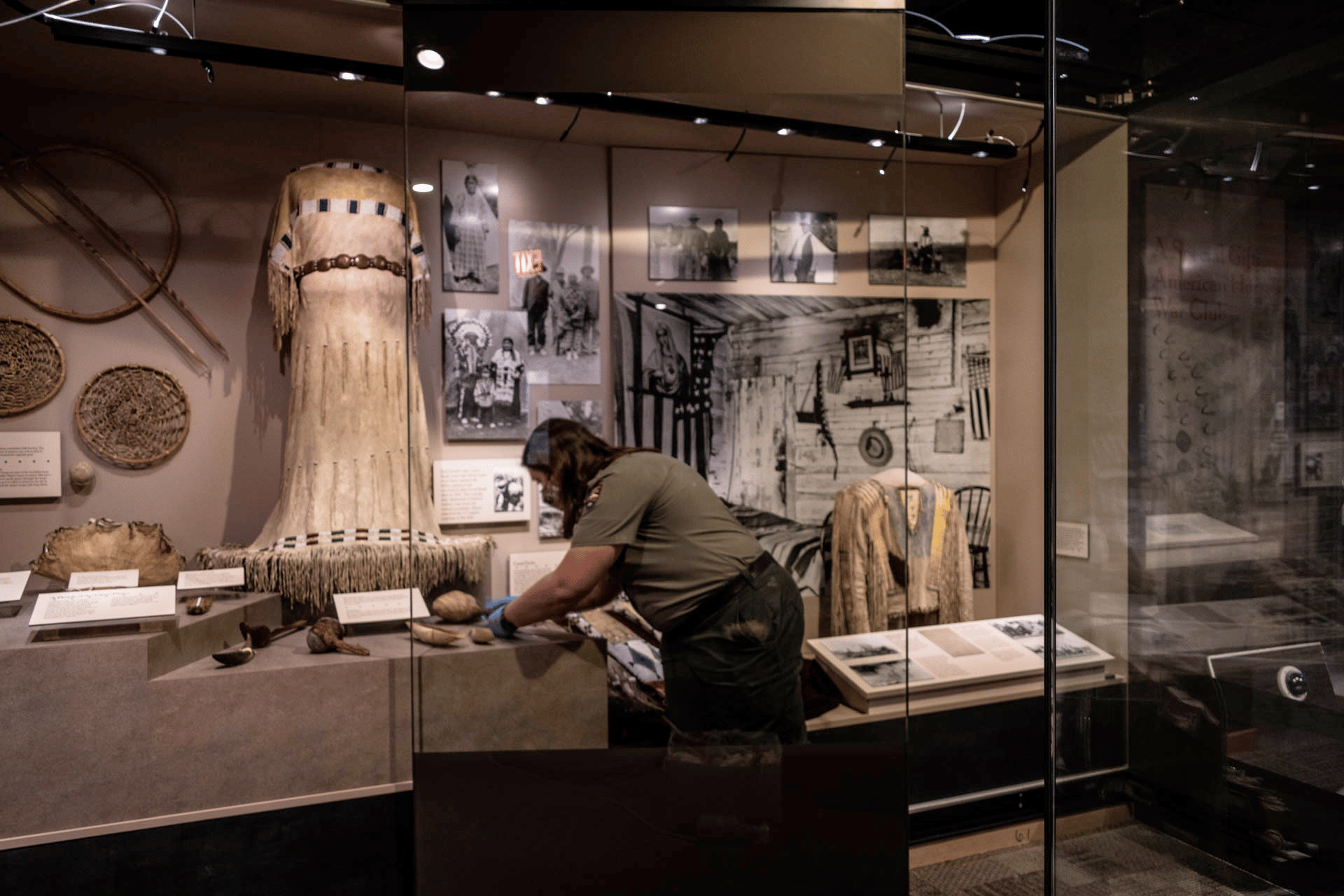
It’s Not Jurassic Park, But It’s Still Well Worth The Visit
Twelve years later, Olaf Peterson of the Carnegie Museum in Pittsburg became the first professional paleontologist to excavate in the ‘great bonebed’ in the Fossil Hills.
Now you can travel back 23 millions years to see these incredible creatures. You will find them at the visitor center.
It’s not Jurassic Park, but it’s still well worth the visit. And, the best news of all is that you don’t have anything to fear from these creatures.
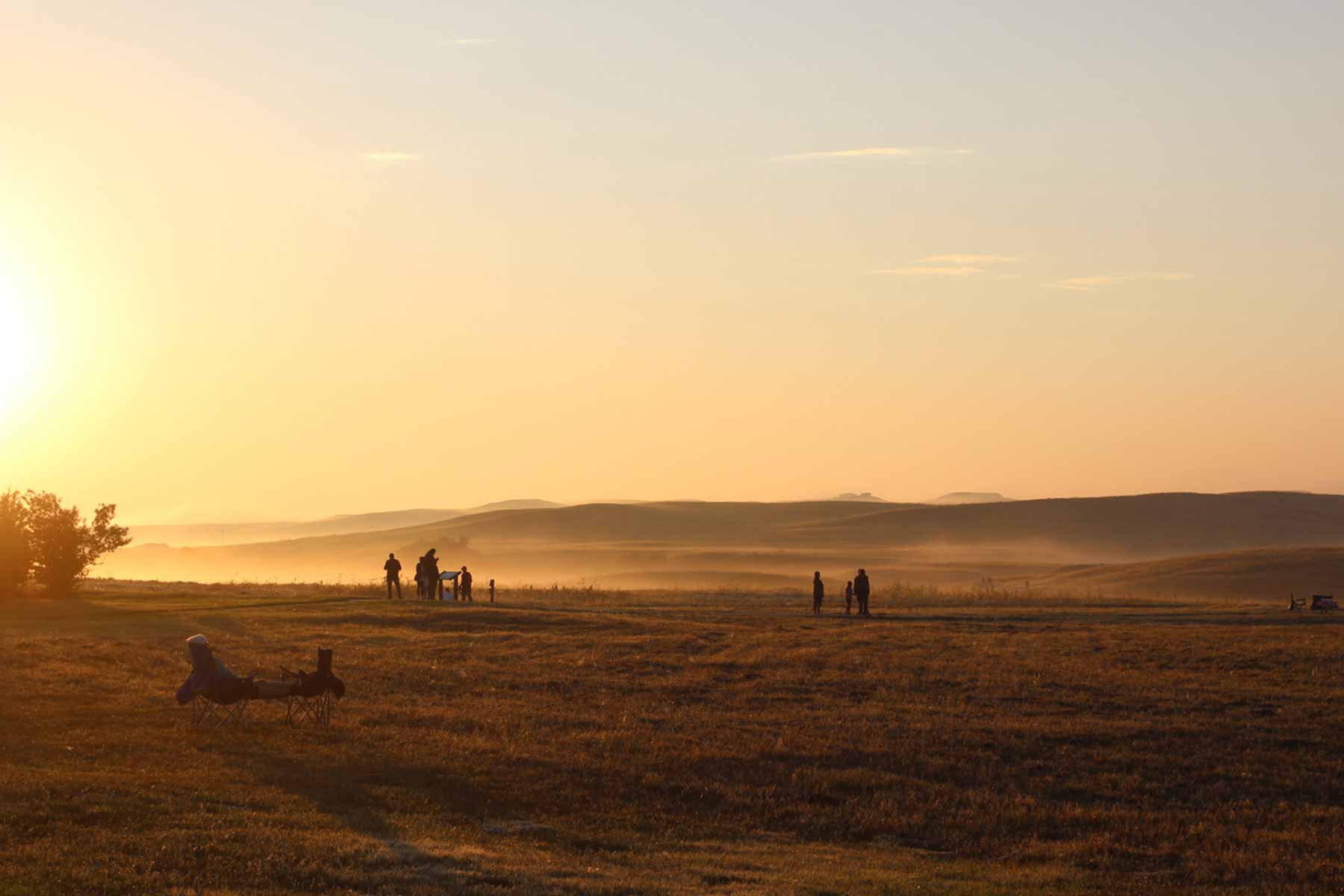
“Archaeology is the peeping Tom of the sciences. It is the sandbox of men who care not where they are going; they merely want to know where everyone else has been.”
-Jim Bishop
Experience A Different Perspective On Native American History
Visitors can also see an amazing collection of Northern Plains Native American artifacts.
You can explore the Lakota and Cheyenne culture by checking out the James H. Cook collection of gifts from Chief Red Cloud.
These gifts were given by the Lakota to James Cook when they visited him at the Agate Springs Ranch.
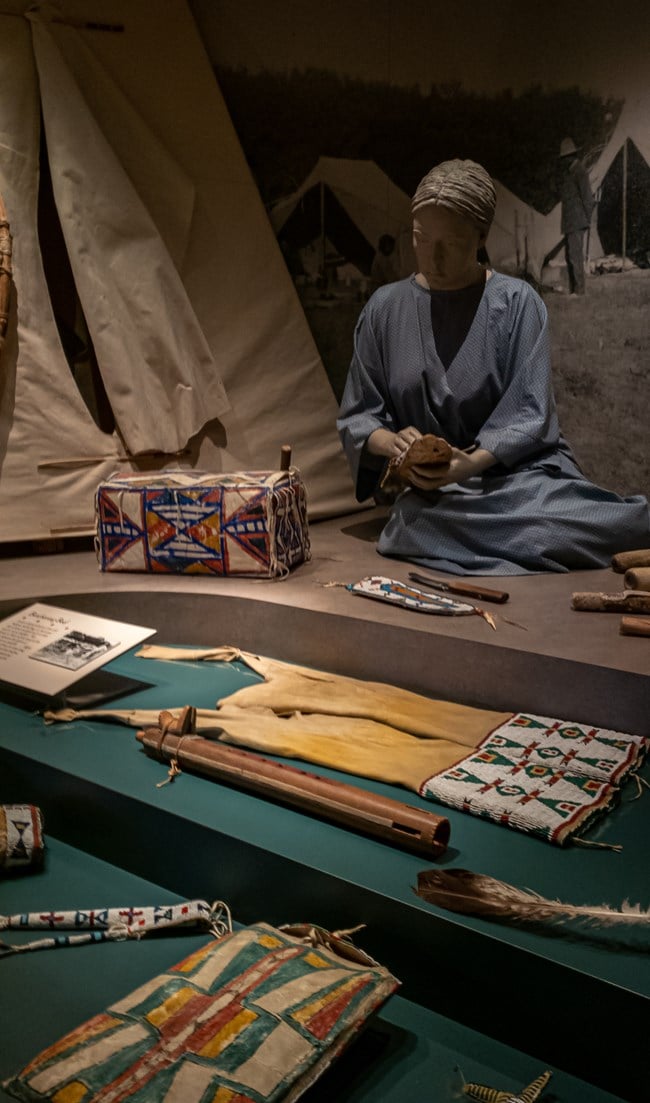
While you’re there, you can see Chief Red Cloud’s shirt and moccasins.
There’s Two Excellent Walking Trails
There’s two excellent walking trails. The one mile Daemonelix Trail features exhibits of the spiral corkscrew fossil of the Paleocastor, an ancient land beaver that lived here in the Miocene.
The 2.8 mile Fossil Hills Trail takes visitors to the historic dig sites. While you’re there you can explore the source of the famous fossil discoveries.
There’s also a boardwalk to take you over natural wetlands and the Niobrara river.
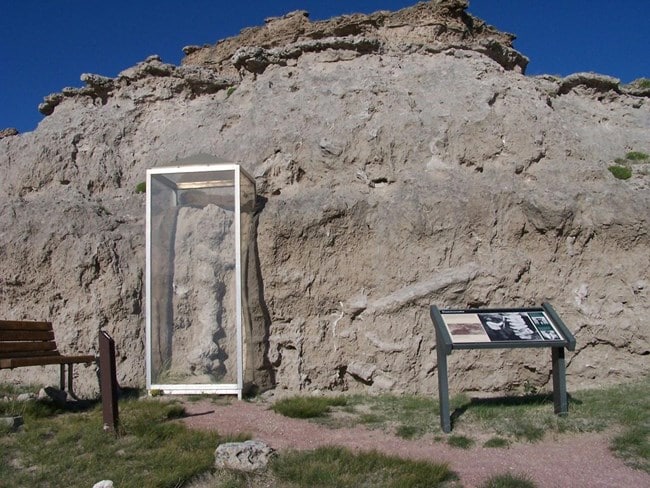
CHECK OUT: 15 MUST-SEE Historic Sites In New Jersey
2. Missouri National Recreational River

We’re on to our final 2 historic sites. In the runner-up spot at #2 is the Missouri National Recreational River.
It’s a national recreational river that’s located on the border between Nebraska and South Dakota. With its sprawling boundaries, there are endless recreational opportunities in this national park.
Activities include the following: biking, bird watching canoeing, fishing, hiking, hunting, and kayaking.
There’s History Too
According to the National Park Service, humans have shaped and in turn been shaped by the mighty Missouri River. There are numerous prehistoric and historic village sites within the Missouri National Recreational River boundaries.
Early cultures developed along the river, most notably the Woodland Culture, dating back up to 2,500 years.
They were followed by the Iowy, Arikara, and Mandan. By the time Euro-Americans arrived, the land was populated by the Omaha, Ponca, Yankton Nakota, and Teton (Brule’) Lakota.
The Santee Dakota were relocated to this area from Minnesota. Changes to the river brought about by human activity over the past two centuries have dramatically changed the lives of countless people.
Among these are:
- Chief Standing Bear – in a landmark court case he proved that Indians were “persons” under the law, free to enjoy the rights of any other person in the land.
- Grant Marsh – Among the numerous Missouri River steamboat pilots, he was possibly the greatest ever.
- Lewis and Clark – The Missouri National Recreational River corridor can serve as a microcosm of the expedition. (Source: NPS)

CHECK OUT: 15 MUST-SEE Historic Sites In Pennsylvania
1. Homestead National Historical Park
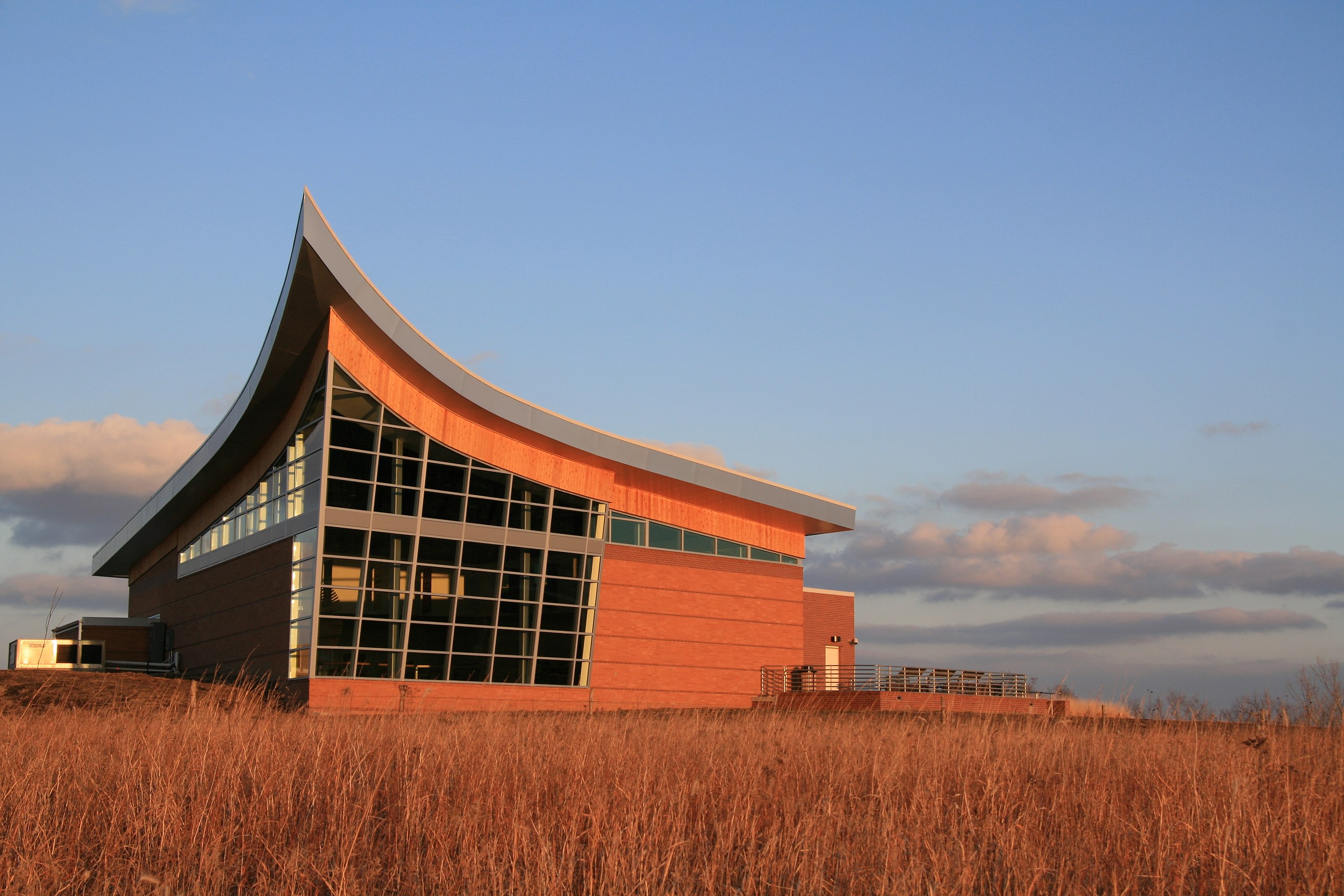
As the #1 Historic Site In Nebraska, More Than Just Parks has selected Homestead National Historical Park.
Homestead National Historical Park brings the epic homestead story to life for visitors of all ages.
Now the best place to begin is at the beginning (a.k.a. the Homestead Heritage Center).
This multipurpose facility demonstrates the true scope and importance of the Homestead Act of 1862.
The Homestead Acts
If you’re unfamiliar with the history of this place then have no fear. As a retired history teacher, I’m also looking to do a quick history lesson, but have no fear as I don’t intend to assign any homework. So, here we go!
The Homestead Acts were laws in the United States by which an applicant could acquire ownership of public land which was typically called a homestead.
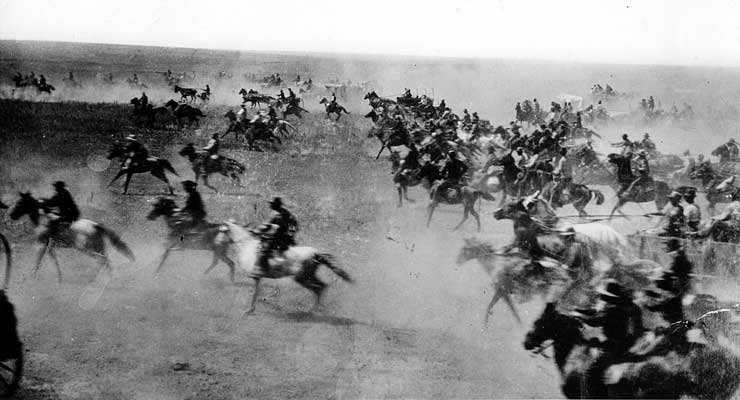
It Allowed Nearly Any Man Or Woman A “Fair Chance”
By granting 160 acres of free land to claimants, it allowed nearly any man or woman a “fair chance.” It was our government’s way of giving its citizens the opportunity to have a better life and a brighter future provided they were willing to work the land.
Among its provisions was a five-year requirement of continuous residence before receiving the title to the land and the settlers had to be, or in the process of becoming, U.S. citizens.
The Homestead Acts opened up America’s public lands to homesteaders who were looking to build a place to live and work. One of the most famous was the Oklahoma Land Rush of 1889.
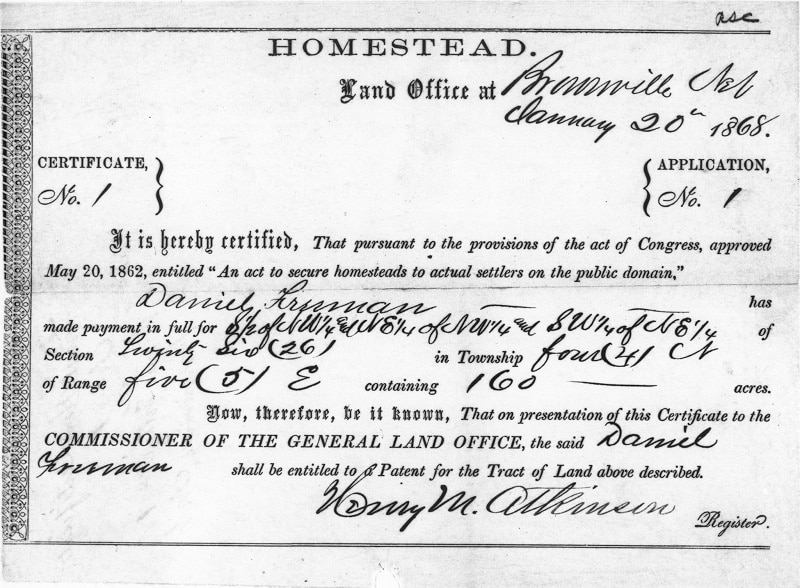
At Homestead National Historical Park, visitors learn about many aspects of the homesteading story. An exhibit titled “Opportunity and Displacement” discusses how land laws affected Native Americans.
Of course, if you are interested in learning more then I recommend: The Homestead Act and Westward Expansion: Setting the Western Frontier by Irene Harris.
Things To Do At Homestead National Historical Park
There are some fascinating historic places to visit including the Palmer-Epard Cabin, built in 1867, by George W. Palmer.
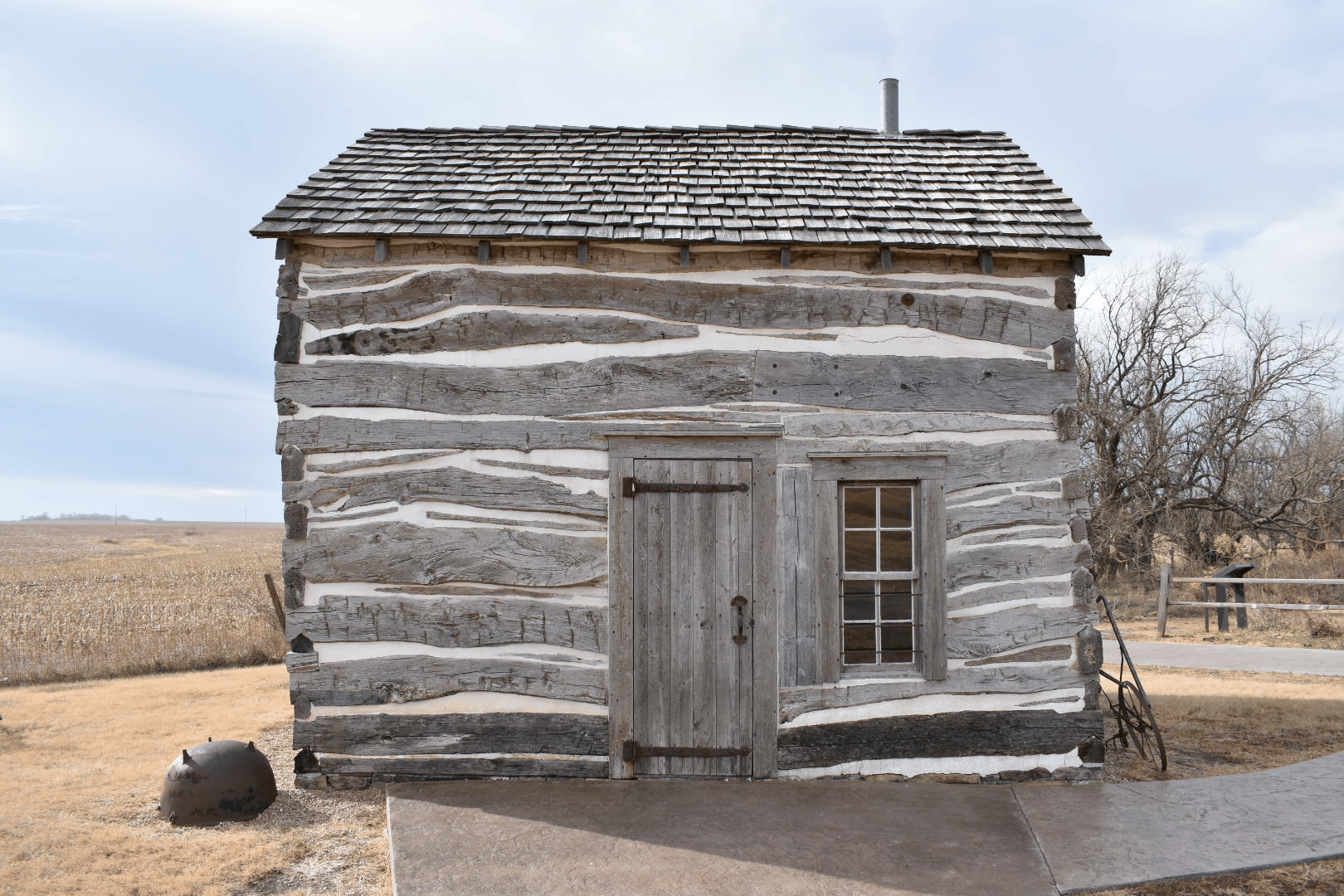
There’s also the Freeman School which serves as a reminder of the role the old one-room schoolhouse played in the history of the prairie frontier.
And, if you want to see what an actual homestead looks like, I recommend a visit Daniel Freeman’s homestead claim. Today the claim is a part of the Homestead National Monument.
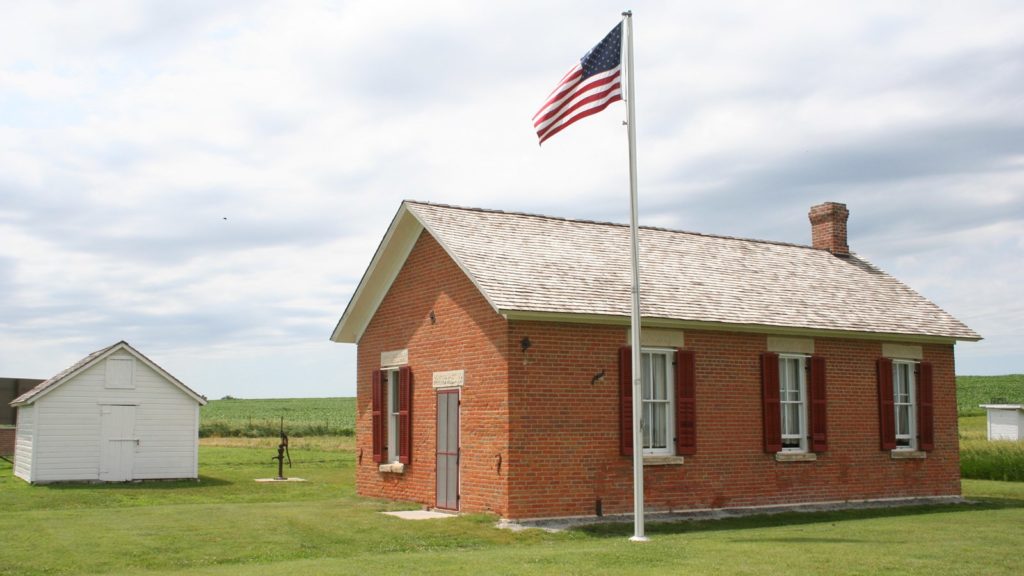
CHECK OUT: 10 BEST Civil War Sites In America
List Of Historic Sites In Nebraska
- Homestead National Historical Park
- Missouri National Recreational River
- Agate Fossil Beds National Monument
- Niobrara National Scenic River
- Scotts Bluff National Monument
- Chimney Rock National Historic Site
- Father Flanagan’s Boys Home
- Captain Meriwether Lewis
- Memorial Stadium
- Fort Atkinson
- William Jennings Bryan House
- USS Hazard
- Willa Cather House
- Ash Hollow Historical Park
- George W. Norris House
Why Trust Us About Historic Sites In Nebraska?
We’re Jim Pattiz and Will Pattiz, collectively known as the Pattiz Brothers and we absolutely LOVE the national parks.
You should probably know that we don’t just make this stuff up out of thin air. We’ve spent our entire adult lives exploring and filming America’s national parks and public lands.
We’ve worked with the National Park Service, the Department of Interior, USDA, U.S. Forest Service, and more for years creating films on important places and issues. Our work has been featured in leading publications all over the world and even some people outside of our immediate family call us experts on the national parks.
And, in 2018, our father – having spent a lifetime teaching history – joined us so that he could help us to tell the stories behind these amazing places.
Meet The Parks Brothers
We Hope You’ll Follow Our Journey

Our goal here at More Than Just Parks is to share the beauty of America’s national parks and public lands through stunning short films in an effort to get Americans and the world to see the true value in land conservation.
We hope you’ll follow our journey through the parks and help us to keep them the incredible places that they are. If you’re interested in joining the adventure then please sign up below!
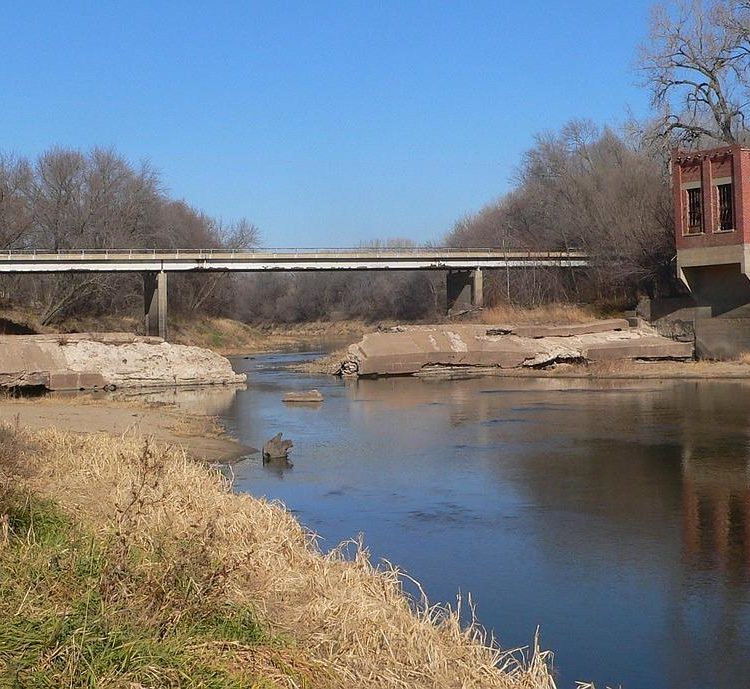
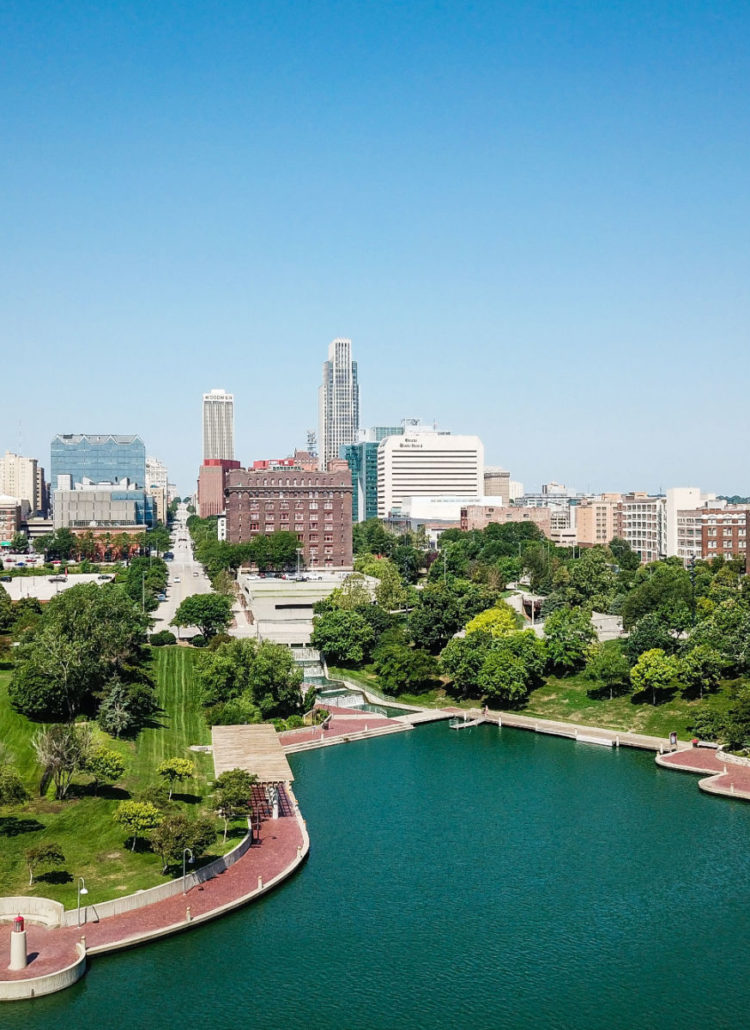
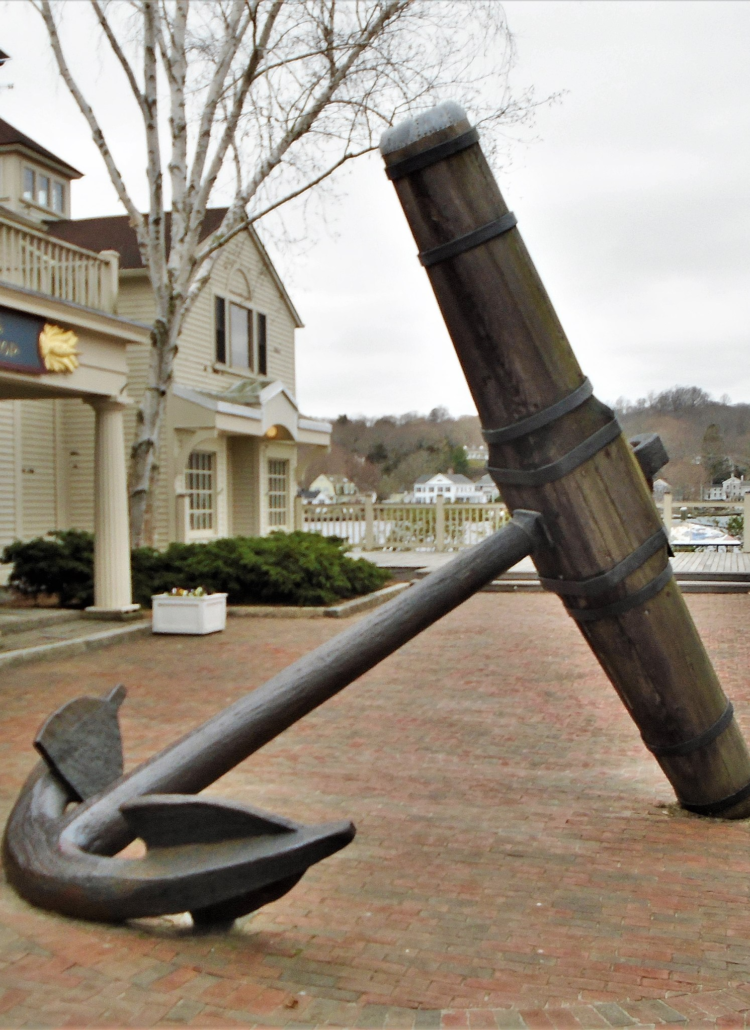
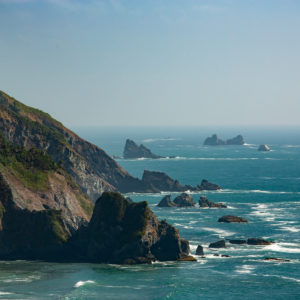

Leave a Reply